Continuing the series of posts on different aspects of finance to help provide the basic financial background needed to be successful financially in life, today we turn to the subject of mutual funds. If you have not watched CNBC, read a book on investing, or picked up a copy of Money magazine or The Wall Street Journal, you’ve probably still heard of mutual funds but know little about them. This is really a shame since mutual funds are an easy way to invest and belong in every household – not just those of the wealthy. Let’s get into some of the basics and then talk about how you can get started in mutual fund investing.
What is a mutual fund?
A mutual fund is a way to invest where many people pool their money together to invest as a group. For example, 10,000 people may get together and each put in $5,000 each to invest in a basket of companies. In doing so, their money can be spread out into several different investments instead of being limited to one or two investments. The money is invested by a manager who makes the decisions on where and how to invest within the confines of the guidelines for the mutual fund. In exchange, the manager takes a small fee based on the dollar value of the assets in the mutual fund. Owners of the mutual fund (those who invested) own a fraction of each investment in proportion to the amount that they invested. In the example above, since each person put in $5000 and there were 10,000 investors, each person would own 1/10,000th of each of the investments. Normally everyone puts in different amounts and therefore owns different percentages of the mutual funds assets.
Learn to master your money with these great books from Amazon:
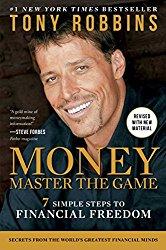
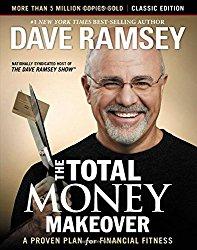

 Why should I own mutual funds?
Why should I own mutual funds?
If you save up money regularly, rather than spend money as you go, you provide security for yourself and your family when things happen like car repairs and medical events. In addition, you’ll have the money needed for expenses such as putting a new roof on your house, college tuition for your children, and retirement that are predictable, but require a great deal of savings. If you invest some of the money that is sitting around in your savings, you can use the power of compounding to increase your savings, thereby reducing the amount of money you need to actually work for and put away. Without compounding, it is practically impossible to put away enough money to pay for things like a long retirement. In addition, if you have money just in cash (or even in a bank account) for long periods of time, you’ll lose a lot of the value to inflation. Investing the money in mutual funds instead will protect you from inflation since the value of the assets in the mutual funds will go up as the value of the dollar declines.
Get your Java on:


Coffee Variety Sampler Pack for Keurig K-Cup Brewers, 40 Count
San Francisco Bay OneCup, Fog Chaser, 80 Single Serve Coffees
KRUPS F203 Electric Spice and Coffee Grinder with Stainless Steel Blades, 3-Ounce, Black
How do I invest in mutual funds?
Several different companies sell mutual funds with each fund investing in different things. This is called a “family of funds.” Investing is as simple as setting up an account online (or with a phone call) and sending in a check or using an electronic transfer. There is normally a minimum amount that can be invested in each fund, ranging from $3,000 to $5,000 or more. Other than saving up the minimum, there is really no trick to it.
Once you’ve made the initial investment, you can normally add to it in small amounts. There is often no minimum for future investments in the same fund, or maybe there will be a small $25 to $50 minimum. Once you have enough invested, you can also sell some of your first fund and then invest in a different fund, or just save up the minimum again and invest in a second fund. Some fund companies also allow you to start with less if you agree to use automatic deposit to buy additional shares on a regular basis. This is generally a good idea since it will mean you’ll be making regular investments, which is one secret to doing well and building up your portfolio.
You can also buy mutual funds through a brokerage account or even a bank or credit union. In general I would not recommend this path since you’ll probably have a limited selection of funds and you’ll probably pay a big fee to the broker or bank. A better option if you’re using a broker is to buy shares of an Exchange Traded Fund, or ETF, which is basically the same thing as a mutual fund. There are some differences, but that is for a more advanced discussion. If you buy an ETF you will pay the broker a commission, so you’ll need to buy in big enough increments to keep costs down, but the ETFs themselves tend to be very low-cost, so you’ll make back the money in savings if you hold the ETF for a long period of time even if you only buy in $1,000 or $2,000 increments. Some brokers may even offer free ETFs.
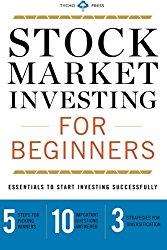
How do I select mutual funds to buy?
There are many different funds to select from and it can become difficult to choose. In general you’ll want to try to 1) minimize your fees and costs, 2) spread your investments out into different parts of the market and 3) choose funds based on the amount of time you’ll stay invested. Assuming you’re investing for something like five, ten, or more years into the future, your first fund will probably be a large-cap fund like an S&P500 fund, large-cap growth fund, or similar. For really long investments, like a retirement fund when you’re in your 20’s, a small cap fund like a Russell 2000 fund or small-cap growth fund might be a better pick since small stocks will beat larger ones over really long periods of time. Really you could start with one of these funds and then add the second once you’ve saved up enough.
If you’re only investing for about five years, you might want to buy into a short-term bond fund or just leave the money in bank assets like CDs since the fluctuation in stock prices over short periods of time is unpredictable. You might also want to add a bond fund to a stock portfolio when you start to approach the time when you’ll need the money for things like college, a home purchase, or retirement. In general a combination of bonds and stocks will fluctuate less in value than stocks or bonds alone, although you’ll reduce your total return over long periods of time by adding bonds. If you just don’t like market fluctuations, however, add 30-40% bonds (for example, $4,000 in a bond fund and $6,000 split between a small cap and a large cap stock fund) and it will make it easier to sleep at night. Even during the 2008 crash, bonds were unaffected. In fact, they actually gained a bit for the year! An REIT fund, which invests in real estate, is also a consideration as a counterbalance to stock mutual funds.
You’ll want to find a fund with fees of 0.30% of assets per year or less. (This means that they’ll charge you $3 per year for every $1,000 you have invested.) This is easiest to achieve using index funds, which just choose stocks in order to follow a specific part of the stock market rather than having a manager who tries to outperform the market. Because few fund managers are able to actually beat market returns, you’ll generally be best off just buying index funds and index ETFs.
Where can I learn more about mutual fund investing?
There are many books on investing that include mutual funds. Below are a sample of books that you could read. I’ve included the SmallIvy Book of Investing because the last couple of chapters are devoted to mutual fund investing, including how to use mutual funds to gather money for your retirement.

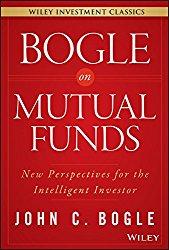
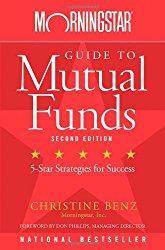
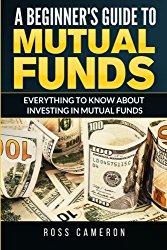
Have a question? Please leave it in a comment. Follow me on Twitter to get news about new articles and find out what I’m investing in. @SmallIvy_SI
Disclaimer: This blog is not meant to give financial planning or tax advice. It gives general information on investment strategy, picking stocks, and generally managing money to build wealth. It is not a solicitation to buy or sell stocks or any security. Financial planning advice should be sought from a certified financial planner, which the author is not. Tax advice should be sought from a CPA. All investments involve risk and the reader as urged to consider risks carefully and seek the advice of experts if needed before investing.
